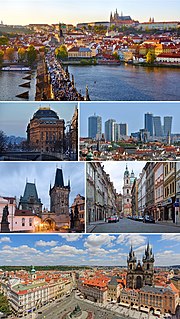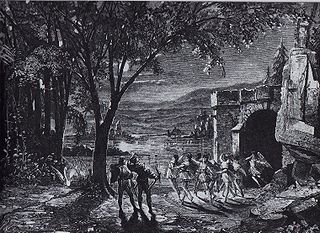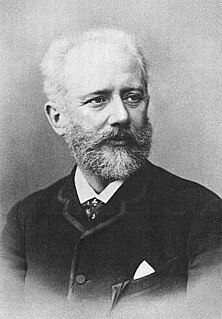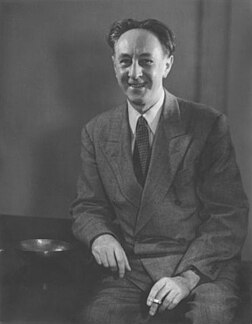
Nederlands Dans Theater is a Dutch contemporary dance company. NDT is headquartered at the Lucent Danstheater in The Hague. In addition to the Lucent Danstheater, NDT performs at other venues in the Netherlands, including Amsterdam's Het Muziektheater and Nijmegen's Stadsschouwburg.
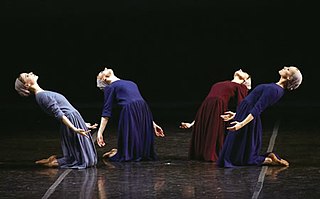
The Boston Ballet is an American professional classical ballet company based in Boston, Massachusetts. The company, founded in 1963 by E. Virginia Williams, and Sydney Leonard, was the first professional repertory ballet company in New England. Boston Ballet’s national and international reputation developed under the leadership of Artistic Directors Violette Verdy (1980–1984), Bruce Marks (1985–1997), and Anna-Marie Holmes (1997–2000). Current Artistic Director Mikko Nissinen was selected to lead Boston Ballet in September 2001. Nissinen leads the company, and Boston Ballet School, the largest ballet school in North America, with Executive Director Meredith (Max) Hodges.
The Academy of Performing Arts in Prague is a university in the centre of Prague, Czech Republic, specialising in the study of music, dance, drama, film, television and multi-media. It is the largest art school in the Czech Republic, with more than 350 educators and researchers, and 1500 students.
Hubbard Street Dance Chicago is America's premier contemporary dance company based in Chicago. Hubbard Street performs in downtown Chicago at the Harris Theater for Music and Dance and at the Edlis Neeson Theater at the Museum of Contemporary Art, Chicago. Hubbard Street also tours nationally and internationally throughout the year.
Magician's Lantern, largely considered the world's first multimedia theatre, was founded as a cultural program at the 1958 Brussels Expo. Shortly after, the company was invited to give performances in the Soviet Union, Syria, Egypt, the USA, England, France, the Netherlands, Belgium, Austria, Spain and Israel. It launched its official activity on 9 May 1959, as an independent company of the National Theatre, performing at the Adria palace in Prague. Wonderful Circus, which premiered in 1977, is the most frequently performed theatre piece in Central Europe, and has remained in the repertoire ever since. Laterna magika productions blend various genres, ranging from dramatic acting through affording a dominant role to dance and ballet to mime and Black Theatre. All of their productions have been original works directly created for the company, not ready-made pieces, which, with a few exceptions, have never subsequently appeared in the repertoire of another company. The fundamental principle has been gradually supplemented with new technologies, for instance, digital projection or new media, including real-time programmable software.
Jodie-Anne White-Bivona was an Australian dancer, choreographer and artistic director of the Ballet Theatre of Queensland.
The Singapore Dance Theatre is Singapore's national dance company, founded in 1988 by Anthony Then and Goh Soo Khim. It made its debut in June 1988 at the Singapore Festival of The Arts and received its first arts patronage by the then-Deputy Prime Minister, Mr Ong Teng Cheong. The Artistic Director of the company is Janek Schergen.
The theatre of the Czech Republic has a rich tradition in all genres, including drama, opera, ballet and dance, puppet theatre, black light theatre etc.
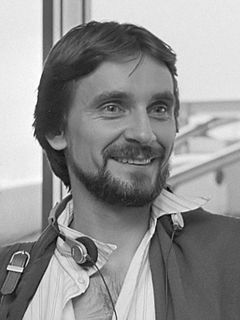
Jiří Kylián is a Czech former dancer and contemporary dance choreographer.
The Center Prodanza of Cuba was established on December 30 of 1994 under the direction of Laura Alonso, derived from the Department of Specialized Teaching Ballet Nacional de Cuba, in which they had created the basis for promoting technical Cuban Ballet School.
The Hungarian National Ballet is a classical ballet dance company based in Budapest, Hungary. The ballet company is attached to the Hungarian State Opera House, which is also home to the Hungarian National Opera company and the Hungarian National Philharmonic orchestra. The ballet company was established in 1884.
Bruce Steivel (1949–Present) is an American ballet dancer, choreographer, and artistic director of Bay Pointe Ballet.
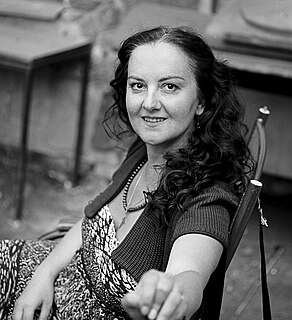
Tamara Černá is a Czech photographer and ballerina.
Gil Boggs is the Artistic Director of Colorado Ballet in Denver, Colorado. Boggs accepted the position of Artistic Director with Colorado Ballet in the Spring of 2006. In August 2014, Boggs re-signed a five-year contract to remain as Colorado Ballet's Artistic Director. During Boggs’ tenure with Colorado Ballet, he has re-staged full-length productions of Swan Lake, The Sleeping Beauty, Giselle, Don Quixote and Coppélia along with adding new full-length productions of Romeo & Juliet, Cinderella, Le Corsaire, Beauty and the Beast and Peter Pan. Boggs has also presented 15 world premieres and 12 Colorado Ballet premieres by choreographers Twyla Tharp, Lar Lubovitch, Antony Tudor, Val Caniparoli, Dwight Rhoden and Lynne Taylor-Corbett.

Martin Dvořák was born in Brno in 1979. He received his professional dance education at the Dance Conservatory in Brno, from which he graduated in 1997. He advanced his education at the Anton Bruckner Privat University in Linz (Austria) where he enrolled in the Masters' Degree program in Contemporary Dance Movement Research. As a dancer, Dvořák is versatile in various dance styles. He collaborated on a number of projects with the following companies:

The National Moravian-Silesian Theatre is a professional theatre company based in Ostrava in the Czech Republic. It is one of ten opera houses in the country, and the largest theatre company in the Moravian-Silesian Region. The NDM has two permanent theatres, the Antonín Dvořák Theatre and the Jiří Myron Theatre. The company was registered in 1918, and the theatre was first opened to the public on 19 August 1919.

Nataša Novotná is a Czech dancer, choreographer, lecturer, co-founder of 420PEOPLE and founder of Kylián fund in Prague.

